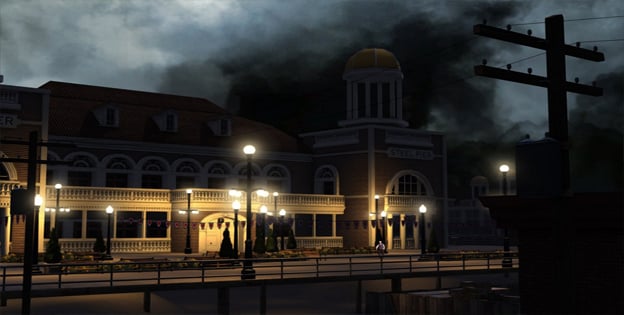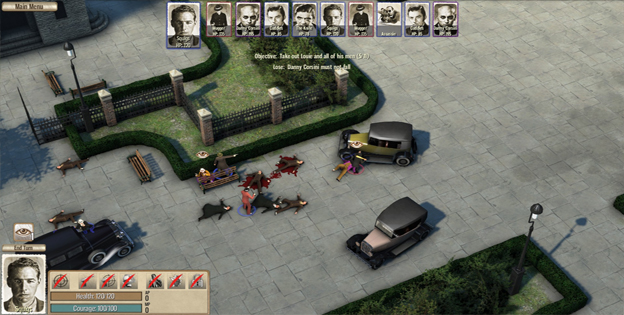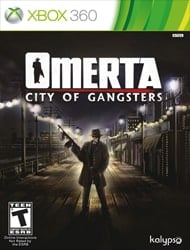A Simulation Of Lost Potential
Any simulation gamer worth their salt knows the Tropico name, as Haemimont has worked wonders with the brand. Somehow, they’ve not only made Tropico one of the most compelling sim games on the market, but they’ve also made the gameplay actually feel like the player is a small island dictator. It stands as a triumph in matching gameplay with tone.
Their newest game, Omerta: City of Gangsters, on the other hand, seems to understand its tone but not much else. While the game has an amazing atmosphere, skillfully getting across a prohibition-era mafia feel, its gameplay isn’t very compelling.
Omerta has a lot of good ideas that just never seem to come to fruition. For example, the character generation system is an interesting way to tie mechanics and plot together. Your character is built out of six stats, and you decide their starting values by fleshing out your character’s backstory. You’ll decide things like what jobs your character worked in as a teen, what his first fight was like, and what his childhood nickname was. It makes your character feel more real, like a product of his upbringing. Each option’s effect on your stats is also spelled out in plain English if you care more about min-maxing your character than you do telling an interesting story.

The game is essentially split up into two parts. The simulation section plays out a lot like Tropico and its ilk; it’s a lot of resource management, handling random events and catastrophes, and building up your power and influence. The other half of the game is combat, which plays out in a turn-based style slightly similar to XCOM. Unfortunately, your character’s stats only come into play during the combat portions of the game, and they don’t actually affect combat that much. This makes an otherwise interesting spin on character creation somewhat moot in the long run, squandering the innovative potential the system had.
The simulation portions of the game have a distinct gangster tone to them, but they get repetitive quickly. Little touches, like counting dirty and clean money as two different resources, really do hammer home that mafia feel, but the speed of the game ruins any atmosphere that it creates. You’ll end up doing things like producing illegal alcohol out of the back rooms of business, setting up safe-houses for planned heists, constructing legitimate businesses for the purpose of money laundering, and more, but there’s little compelling you to do any of this other than the basic simulation gamer impulse to keep all of your numbers as high as possible.

The game isn’t easy, per se, but it sure feels safe. There are times when you’ll find yourself at a crippling deficit during the simulation parts of the game, but you don’t feel the same sense of doom that you feel when, say, your funds run out in SimCity. You know you’ll bounce back eventually, but it will take a while. In fact, Omerta doesn’t have levels of difficulty as much as it has levels of tedium. There’s no real threat, even in some of the more challenging scenarios.
Combat, when it’s required, is somewhat more interesting but just as safe. Characters have a certain amount of movement points and a certain amount of action points, and you can surmise the rest of the gameplay from there. Move your character into position, attack an enemy, lather, rinse, repeat.
Your characters have stats for health and courage. When your health falls, your character becomes incapacitated. Your characters don’t really die; they just get brought back when the combat is over. This kind of cheapens the mob feel, especially since you’re doing battle with knives and shotguns. When your character’s courage falls, which happens when he sees his buddies take hits and get injured, he becomes less effective in battle. The courage mechanic is actually a nice touch, accurately getting across the feel of a chaotic gunfight between gangs, but it actually doesn’t come into play all that often.

There’s a cover system, but it doesn’t make much sense. For example, you’ll often find that you can shoot someone through a wall, but will totally miss them if they are standing behind a thin pillar or barrel. You get to see your hit chance before you attack, so it’s not like the game is hiding information from you; it’s just that some of the hit percentage are kind of wacky. Some cover objects only provide cover from one side, which is hilarious but frustrating. You can also deal damage to environmental objects, but once again, this doesn’t come into play all that often. It only takes about a turn to move around any obstacle, so you’ll find yourself in epic cover-based shootouts far less often than you find yourself running straight at your opponent and firing.
There are three main ways to play Omerta. The single-player campaign is essentially a string of micro scenarios, giving you a goal to reach and ushering you on to the next stage once you have reached it. Unfortunately, your actions in prior scenarios have no effect on your actions in later ones. You simply start from the beginning on a new map and go through the motions once more.
Sandbox mode is there for simulation buffs that prefer to create their own dream mob empire. Unfortunately, this also starts to get boring quickly. Unlike SimCity and several other simulation games, the map doesn’t change much in Omerta. At the start, you’ll see a grey-brown representation of a prohibition-era city, and when you have completed your grand conquest of all things mafia-related, you’ll see a grey-brown representation of that same city with some icons spinning over it. So there isn’t a whole lot to show for endlessly slaving away at the mafia life other than a few high numbers, which might be satisfying for score junkies, but it provides very little motivation for the rest of us.

The game also has multiplayer modes for both co-op and competitive play. However, you are literally getting only half of the experience. Multiplayer does away with the simulation aspects of the game altogether, focusing solely on the combat. While squaring off against your friend in turn-based battles is fun and the battles themselves move at a brisk pace, there are only four maps to play on, which makes you abandon multiplayer after only a few matches. It just doesn’t have any staying power.
Omerta: City of Gangsters has a few things going for it: The soundtrack is pleasantly jazzy, the graphics aren’t the worst (even if they are boringly brown), the voice acting is actually well done and fun to listen to, and the backstory-driven character generation has lots of potential. However, the story of the character creation system is a good metaphor for the game as a whole: It’s a great idea that failed to capitalize on the potential it had. Omerta isn’t Haemimont’s best, and it certainly isn’t Tropico. It’s fun at times, but it drags too often and gives little reward. Perhaps this is some sort of insightful moral commentary on the criminal lifestyle, but even then it doesn’t make the game any more fun.
RATING OUT OF 5 RATING DESCRIPTION 2.5 Graphics
The graphics themselves aren’t bad, but most maps look exactly the same and don’t change much over the course of the game. 3.5 Control
I can’t argue with point-and-click PC interfaces. 3.3 Music / Sound FX / Voice Acting
For the first few hours, the jazz soundtrack is the best thing about the game, but as the game goes on, even that gets repetitive. 2.0 Play Value
Omerta is a great idea, but it drags too often and enthralls too little. 2.2 Overall Rating – Poor
Not an average. See Rating legend below for a final score breakdown.
| Review Rating Legend | |||
|---|---|---|---|
| 0.1 – 1.9 = Avoid | 2.5 – 2.9 = Average | 3.5 – 3.9 = Good | 4.5 – 4.9 = Must Buy |
| 2.0 – 2.4 = Poor | 3.0 – 3.4 = Fair | 4.0 – 4.4 = Great | 5.0 = The Best |
Game Features:
